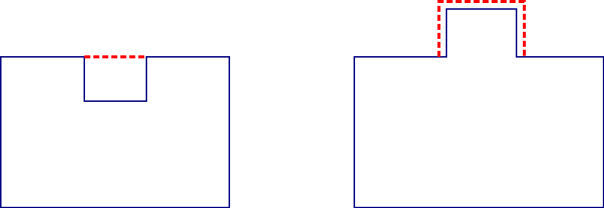Urban planning and quiet places in Amsterdam
<<< Back to Urban planning
Introduction
In this section we discuss some basic principles for building in sound congested places. There are several levels for influencing the noise level at buildings:
- the building plan: building orientation and shape, noise shields;
- at an architectural level: double facade or deaf facade;
- by facilities at the dwelling: loggia’s, closed balcony’s, noise screens fitted to the building (coulisse screens), absorbing walls;
- Urban planning and traffic measures including the use of noise reducing pavement.
Only the first three levels are discussed in this section. Urban planning and traffic measures are discussed further in the noise action plans of the cities.
Basic principles for building in noise congested areas (including QF)
Building orientation and shape & noise shields
In the design of a housing plan it is important to create quiet façades and quiet areas. In the examples below the effect of the building orientation with respect to the noise sours is shown. Quiet sides can be created, even in high noise level areas (see Figures 1 and 2).

Figure 1. Examples for the effects of building orientation (Source: factbook Programma Stiller Stadsverkeer). Red arrow: incident noise. Green arrow: quiet facades.

Figure 2. Examples of effects of orientation of the dwellings. (Source: van Riet HW-beleid Bussum.)
In Amsterdam many housing projects are realised by building parallel to the noise source (rail or road traffic), hereby creating a noise barrier. In the noisiest parts offices can be situated or houses with a “deaf” facade or a double facade (explained below).
It is also possible to make use of a noise barrier (screen). Outside the cities noise barriers are often used in the Netherlands, mostly alongside roads and railways. Noise shields are costly and there are only a few examples in the city of Amsterdam.
Closed housing blocks
In many European cities it was common to build with closed housing blocks (courtyards). From a noise point of view closed housing blocks guarantee that there is a quiet side for all dwellings. In Amsterdam this was also the case until approximately the eighties as is shown in figure 3.

Figure 3. Closed housing blocks (courtyards) in Amsterdam and Rotterdam.
Measures at architectural level
At an architectural level the following measures are common to create quiet sides:
- Terrace wall structure
- Shielding gallery
- Double facade and deaf facade
- Sound absorbing walls
In figures 4 and 5 some of this solution are shown:

Figure 4. Example: terrace wall (side view).

Figure 5. Shielding gallery.
Deaf facade and curtain wall
The Dutch noise legislation forbids the building of new houses in areas where the Dutch legal noise (upper) limit is exceeded. The noise limit doesn’t apply when a "deaf facade" is used. Another possibility for this situation is the use of a curtain walls.
Deaf facade
If a wall of a dwelling has no opening parts (windows, door) then in
the Dutch noise legislation the facade is not regarded as a facade. In
these cases the noise limit doesn’t apply. This is called a 'deaf
facade”. Because a deaf facade is of course not an ideal situation
every dwelling with a deaf facade must have a quiet side, where the
lower noise limit is met (mostly 48 dB).
Curtain wall
As shown in figure 6 this is a facade with a soundproofing screen
attached to it. This is not a ‘deaf facade’. In the ideal case the
sound level at the facade opposite the screen meets the Dutch lower
noise limit, thereby creating a “soundproof” wall.
For these curtain walls there are certain demands: between the screen and the facade outdoor conditions should prevail, minimum ventilation openings are required, and the distance between the screen and the soundproof wall must be at least 0.5 meters.

Figure 6. Curtain walls in front of dwellings (double facade).
For both double facades as facades designed as deaf facades the sound insulation must be so that in the bedrooms and living areas 33 dB prevails (according to the Dutch Building Act).
Facilities at the houses
In situations where there is no quiet facade (e.g. an apartment building perpendicular to the road) a quiet facade can be created by facilities at the houses, e.g. loggia’s or glazed conservatories (see Figure 7). Loggias are recessions in the facade, creating a quiet side. A glazed conservatory (greenhouse) is a screened balcony on the facade.

Figure 7. Loggia's
In Amsterdam the following rules apply for these loggia’s and closed balconies:
- the outside area must be cold;
- there are prescribed openings for outdoor air;
- there are minimum dimensions;
- and (at least) the bedrooms need to be ventilated onto the loggia.

